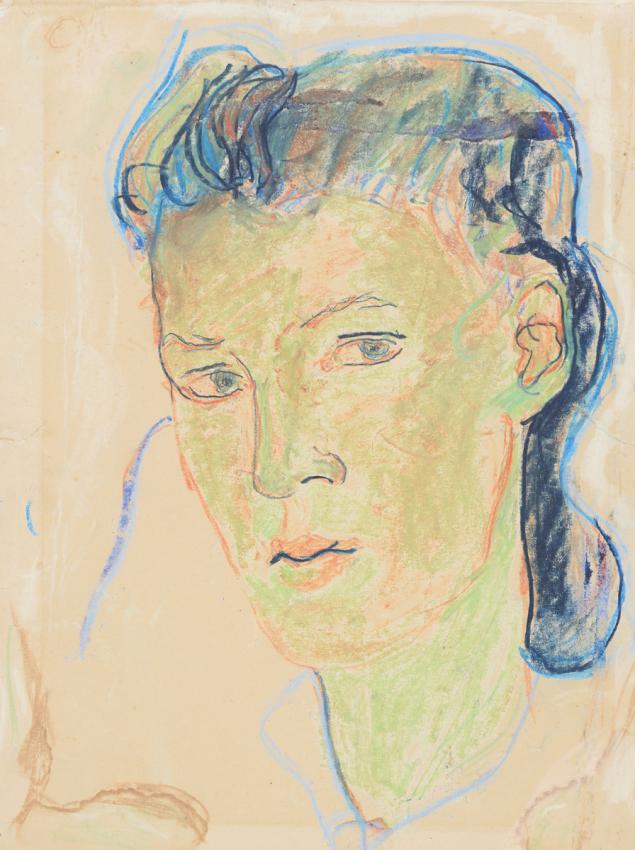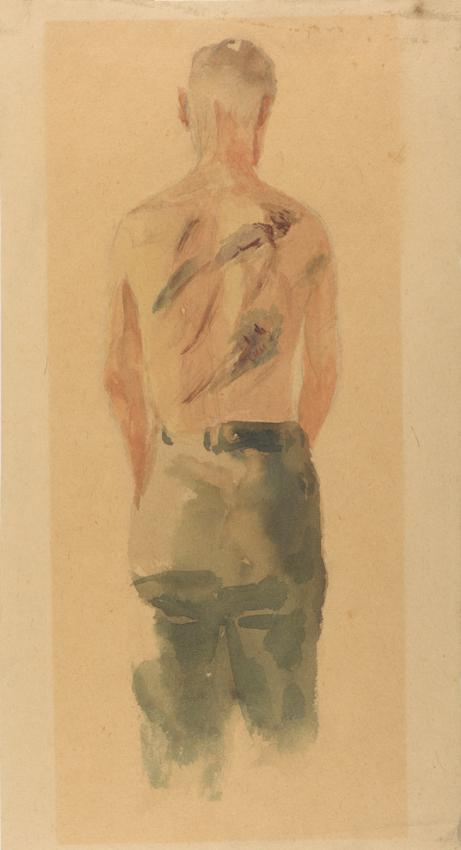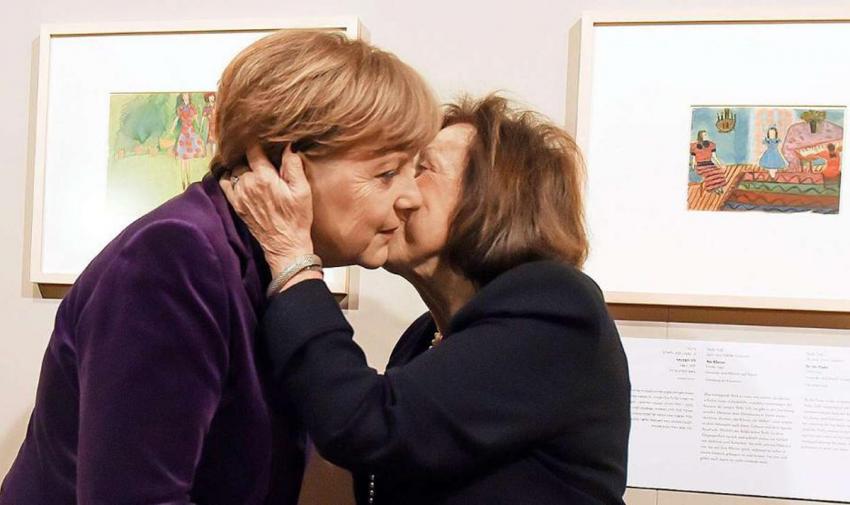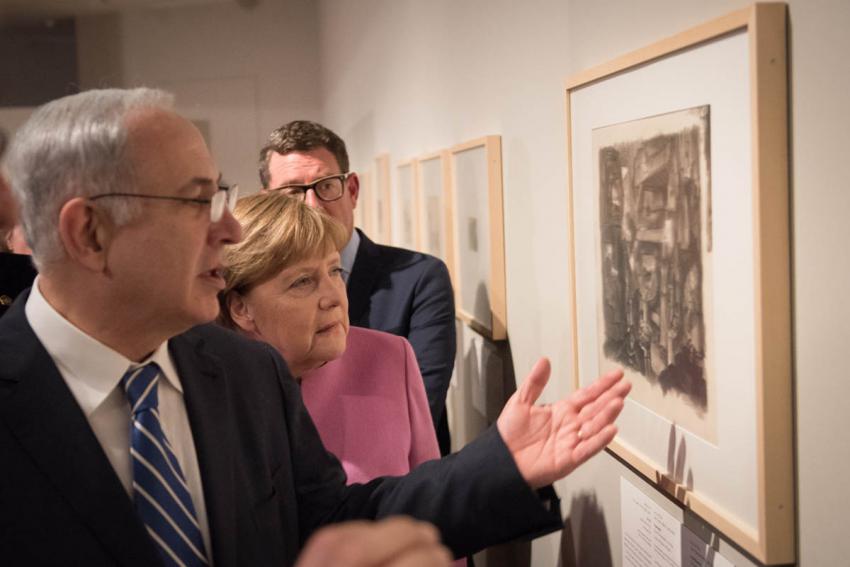
Crayon on paper
Yad Vashem Art Collection
Gift of Ottilie Gobel Bourne, Washington State


Watercolor on paper
Yad Vashem Art Collection


Irwin © DHM/Wolfgang Siesing



Sunday to Thursday: 09:00-17:00
Fridays and Holiday eves: 09:00-14:00
Yad Vashem is closed on Saturdays and all Jewish Holidays.
Entrance to the Holocaust History Museum is not permitted for children under the age of 10. Babies in strollers or carriers will not be permitted to enter.

Crayon on paper
Yad Vashem Art Collection
Gift of Ottilie Gobel Bourne, Washington State


Watercolor on paper
Yad Vashem Art Collection


Irwin © DHM/Wolfgang Siesing



On 25 January 2016, the week of International Holocaust Remembrance Day, German Chancellor H.E. Angela Merkel opened a new exhibition of artworks from the Yad Vashem Art Collection at the German Historical Museum in Berlin. Jointly curated by Yad Vashem and the Bonn-based Foundation for Art and Culture, "Art from the Holocaust: 100 Works from the Yad Vashem Collection" was the first-ever art exhibition of its size and stature that Yad Vashem has sent abroad. The exhibition was on display until 3 April 2016.
"Through art we can feel the power and the suffering of human beings," said Chancellor Merkel. "The paintings are a warning for us, each one in its own way: What happened is not to be forgotten, the memory of the victims has to be kept and we have to do everything with all our power so that it won’t happen again."
Yad Vashem Chairman Avner Shalev called the creations selected for this exhibition
"rare human testimony… They cry out with the greatest sensitivity; at once naïve, trusting and prayerful, while also realistic and insightful. They provide a unique expression to the spirit of humankind, as it confronted unexplained human immorality. Such a confrontation through creative expression awakens us to reflection and soul-searching… the visitors to this exhibition will be exposed to creative sparks of humanity, and will come away with those sparks to illuminate their way."
Also present at the opening were Prof. Dr. Monika Grütters, German Federal Minister for Culture and Media; Kai Diekmann, Pulbisher of BILD Group and Board Member of the Foundation for Art and Culture, who initiated the exhibition; Prof. Dr. Alexander Koch, President of the German Historical Museum; Vivian Uria, Director of Yad Vashem's Museums Division; Eliad Moreh-Rosenberg, Director of Yad Vashem's Art Department, Museums Division and Exhibition Curator; Prof. Dr. Walter Smerling, Chairman of the Foundation for Art and Culture and Exhibition Curator; and Dr. Jürgen Rüttgers, Chairman of the Society of Friends of Yad Vashem in Germany. In addition, Holocaust survivors, including Nelly Toll, the only surviving artist of the 50 represented in the exhibition still alive today, as well as descendants of the artists and members of their families came from different countries for the event.
The exhibition, the result of concerted efforts by Yad Vashem's Museums Division, displayed 100 highlights from its Art Collection – the largest of its kind in the world, with almost 10,000 artworks – accompanied by explanations about the works, the circumstances under which they were created and the story of their survival. Additionally, the biographies of the artists are displayed in English, Hebrew and German, and a comprehensive exhibition catalogue in these languages presented the contents of the exhibition, as well as a series of essays.
"The works were all created between 1939 and 1945, as events were
First published in Yad Vashem Jerusalem magazine, #79, February 2016

Thank you for registering to receive information from Yad Vashem.
You will receive periodic updates regarding recent events, publications and new initiatives.

"The work of Yad Vashem is critical and necessary to remind the world of the consequences of hate"
Paul Daly
#GivingTuesday
Donate to Educate Against Hate


Worldwide antisemitism is on the rise.
At Yad Vashem, we strive to make the world a better place by combating antisemitism through teacher training, international lectures and workshops and online courses.
We need you to partner with us in this vital mission to #EducateAgainstHate
The good news:
The Yad Vashem website had recently undergone a major upgrade!
The less good news:
The page you are looking for has apparently been moved.
We are therefore redirecting you to what we hope will be a useful landing page.
For any questions/clarifications/problems, please contact: webmaster@yadvashem.org.il
Press the X button to continue



